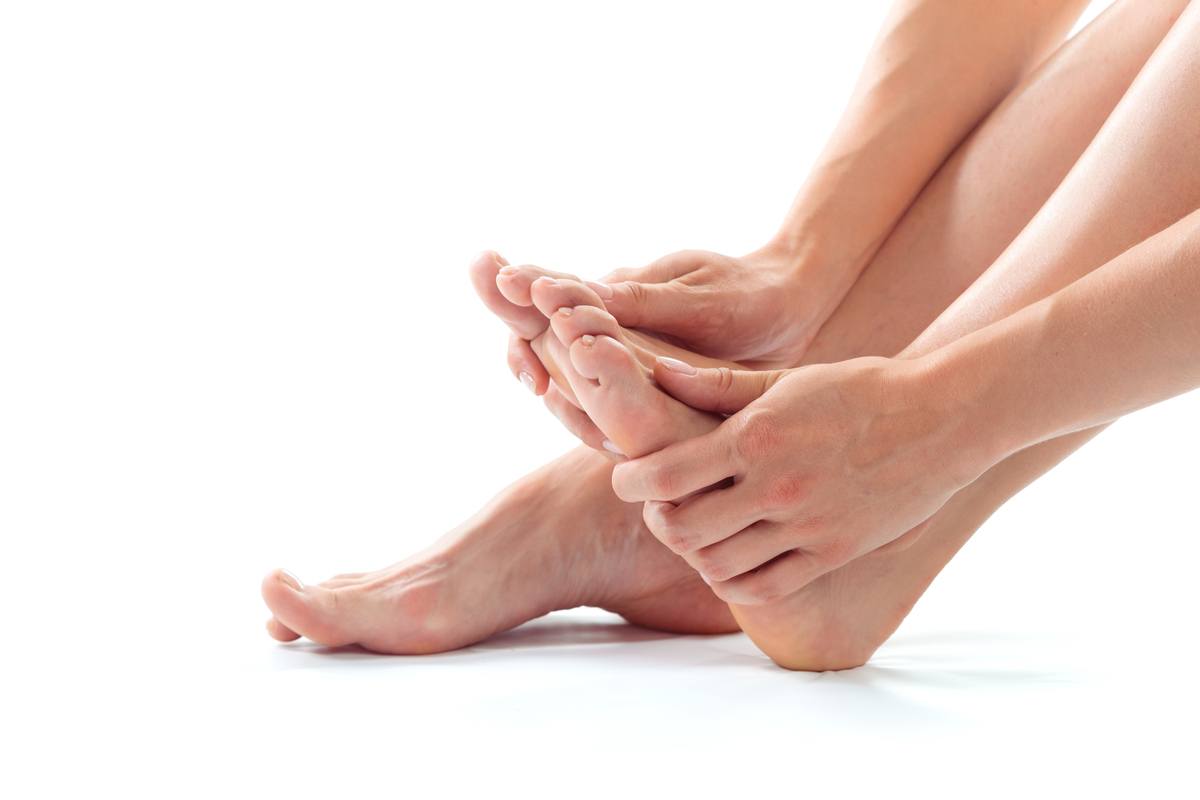Understanding Hammertoes: Causes, Symptoms, and Treatment Options

Hammertoe is a common and often painful foot condition that occurs when the toes curl tightly due to an imbalance in the muscles, tendons, and ligaments of the feet. If you're suffering from hammertoe or pain in the foot, you know firsthand how difficult it can be to perform everyday activities. In this blog post, we'll explore the causes, symptoms, and treatment options associated with the condition so you can find relief from the pain associated with it.
We'll also look at non-surgical interventions for hammertoes and some exercises you can do to reduce pain and address weakened or contracted muscles. Learning about your foot condition is an important first step towards restoring balance to your feet and having a healthy footing for life.
What is Hammertoe?
Hammertoe is a deformity that causes your toes to curl downward instead of pointing forward. This condition is typically caused by an imbalance of the strength and flexibility of the small muscles in the toes, which leads to contracture or hardening of the joints. While hammertoe can happen in any toe, they usually occur in the second or third toe. This condition is also more common in people who have bunions, flat feet, arthritic feet, and those with poor-fitting shoes.
It's important to seek medical help if you think you're suffering from hammertoe as it can be painful and make it difficult to walk. Luckily there are many treatment options available such as changing your footwear, wearing calf stretchers or orthotics, performing exercises that stretch your foot muscles, and even corrective surgery if necessary. But we will take a look at these in more detail in this post.
The Causes of Hammertoes
Hammertoes are an increasingly common condition that affects thousands of people across the world. But just because it’s common, doesn’t mean that you can’t understand the causes and even look into preventing it from happening to you (which we will take a look at in this post). However, it is important to note that there are a range of factors that can cause hammertoe.
Firstly, it could be that you are genetically predisposed to develop hammertoe. It can also be caused by underlying medical conditions, such as arthritis and diabetes, that you may not know that you have. Or, if you are aware of having them, you may find that you go on to develop hammertoes in the future.
But not all causes are genetic or medical related. It could be as simple as having toe injuries or ill-fitting shoes. So these are the factors that you might want to avoid as preventative measures. Although hammertoes may not always cause pain, having them can make it difficult for you to properly use your feet.
To decrease the likelihood of getting this condition, it’s recommended that wearing comfortable shoes that fit properly, avoiding activities that put strain on the toes, and keeping health conditions under control through proper diet and exercise will help you here.
The Main Symptoms of Hammertoes
The first thing to note is how uncomfortable, painful, and difficult it is to walk while suffering from hammertoe. But one of the most common signs and symptoms of hammertoes are bent or curled toes that you might start to notice early on. Not only that, but you can also start to experience pain or discomfort when wearing shoes, too. You may even need to get different shoes fitted to accommodate for this.
Other key symptoms to note are corns or calluses on the affected toes and an inability to move the affected toe. Although some of these symptoms can seem a little alarming at first, they don’t have to be. But it is important for you to take note of them so you can work out whether you need to get an official diagnosis of hammertoes from a doctor or a certified medical professional.
Getting Hammertoe Diagnosed
Diagnosing hammertoes is a relatively straightforward process. It will involve a visual physical inspection and simple tests. A doctor or podiatrist will look at the appearance of your toes to determine if they're overlapping, appearing too cramped, or deviating from their usual alignment.
In some cases, an X-ray may be taken to give the doctor a better understanding of any potential fractures. The X-ray will also reveal if there's any arthritis in the toe joint that could be causing your discomfort. If you do get a confirmed diagnosis, there’s no need to worry. You’ll find that you can then go on to get the treatment you need and find relief from the pain and discomfort the condition brings.
The Treatments Available for Hammertoes
You’ll be pleased to know that there are a variety of treatment options for hammertoe. In the mildest cases, wearing roomy, comfortable shoes with a wide toe box can help the toes relax. Additionally, icing the affected area for 15-20 minutes, 3-4 times each day can reduce pain and swelling. If these measures fail to provide relief, custom orthotics may be necessary.
If you find that these remedies don’t help you, it may be the case that you’d need physical therapy or even surgery by an experienced podiatrist. However, it’s important to note that being prompt with your diagnosis and treatment can avoid further complications down the line.
The Best Ways to Prevent Hammertoes
When it comes to preventing hammertoe, the most important thing to do is to stretch your feet regularly and wear shoes that fit properly. It is not enough just to buy the right size. Shoes should also be wide enough so that toes aren't squished together or pushed against the front of the shoe.
You might also find that wearing cushion and padding within footwear can help reduce discomfort associated with hammertoe. Also note that high-heeled shoes can aggravate the condition, so wearing flat or low-heeled shoes when possible will help. Lastly, protective toe sleeves can be worn in tight-fitting shoes to prevent abnormalities and stop a problem before it begins.
Overall, you’ll find that these tips can help reduce the risk of acquiring hammertoe and improve foot health overall. But if you still find difficulty defining discomfort in your feet or toes, reach out to our facility at Teton Foot & Ankle. Our trained specialists will work with you to determine your problem and arrange the proper treatment to alleviate your pain.
Get in touch!
Call our office if you have any questions about what we do or to schedule an appointment.
